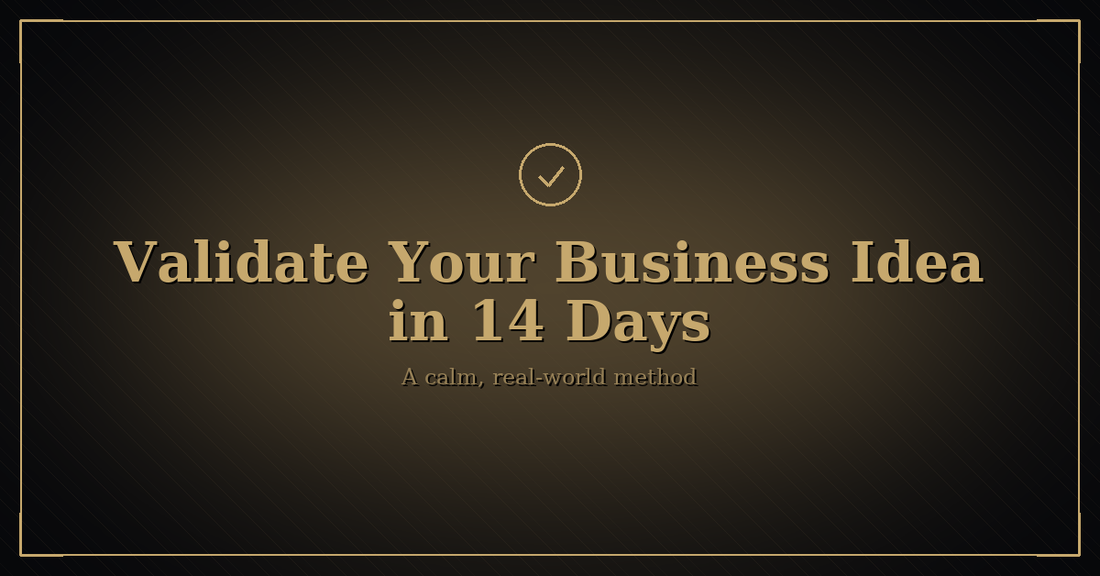
Validate a Business Idea in 14 Days
Share
Validate a Business Idea in 14 Days
Most ideas fail quietly—not because they’re bad, but because they’re never tested with real buyers. Validation is a short, disciplined trial with strangers at a real price and a clear deadline. You don’t need ads or complex tools. You need a plain offer, a small list of exact-fit prospects, and proof built into the work.
What validation is (and isn’t).
A survey or a “sounds great” message is not validation. A deposit, a booked slot, or a paid pilot is. Set a time window and deliver exactly what you promised. Keep the edges visible—what’s included, what isn’t, and the small remedy you apply if you miss (for example, a modest credit).
Two numbers that decide “go” or “fix.”
First, on-time delivery: did you meet the window you sold? Second, contribution per sale (price minus direct costs like materials, shipping, payment fees, and the hands-on time you’d skip if there were no order). If contribution is thin, adjust scope or price—not your standards.
Days 1–2: one page, one promise.
Write a one-minute offer: who it’s for, the outcome by when, what’s included every time, what’s outside scope, the price, the remedy if you miss, and two real time slots this week. Keep the language plain. Busy people remember numbers and dates, not adjectives.
Days 3–5: 40 exact fits, no ads.
Message forty people who clearly have the problem. Mirror their week, state your outcome, and ask for a small paid pilot. Offer two slots (for example, “Thursday 09:00 or Friday 08:00?”). Be brief. Be professional. Move on quickly if the answer is no.
Days 6–10: proof inside the work.
Add timestamps at handoff and completion, include a short “what’s inside” line with delivery, and capture one photo or clip where mistakes usually happen. Deliver precisely what you sold—neither less nor more. Extras belong in priced add-ons, not in pilots.
Days 11–14: pass/fail, then act.
Declare your lines in advance: strangers paid the real price; on-time ≥ 95%; re-work/returns low; contribution healthy (services ≥ 60%; products ≥ 40–50% after shipping, fees, expected returns). If you pass, sell more of the same next week. If you miss a line, change one thing only (segment, scope, or price) and rerun a 7–14 day cycle.
Common traps to skip.
Vague promises (no number, no date). “Unlimited” offers (they create refunds). Slow booking (“we’ll get back to you” kills momentum). Tool detours (simple tools beat complex dashboards). Knee-jerk discounts (fix clarity first: fit/no-fit, inclusions, remedy).
Why this method works.
It forces reality early. You practice keeping a promise at a humane pace, you collect proof while you work, and you learn fast—cheaply. That’s how solid businesses begin.
If you want the full method and ready-to-use playbooks, our book on The Steady Game (included in The Visionary Business Bundle) expands this approach with detailed models, step-by-step pricing, unit economics in plain words, and a six-month operator plan you can run week by week.
